For the 2025 school year, there is 1 public middle school serving 159 students in Midway School District. This district's average middle testing ranking is 2/10, which is in the bottom 50% of public middle schools in Oklahoma.
Public Middle School in Midway School District have an average math proficiency score of 8% (versus the Oklahoma public middle school average of 21%), and reading proficiency score of 12% (versus the 24% statewide average).
Minority enrollment is 55% of the student body (majority American Indian), which is equal to the Oklahoma public middle school average of 55% (majority Hispanic and American Indian).
Overview
This School District
This State (OK)
# Schools
2 Schools
605 Schools
# Students
218 Students
205,206 Students
# Teachers
5 Teachers
12,888 Teachers
Student : Teacher Ratio
32:1
32:1
District Rank
Midway School District, which is ranked within the bottom 50% of all 533 school districts in Oklahoma (based off of combined math and reading proficiency testing data) for the 2021-2022 school year.
The school district's graduation rate of 60-79% has increased from 50% over five school years.
Overall District Rank
#491 out of 538 school districts
(Bottom 50%)
(Bottom 50%)
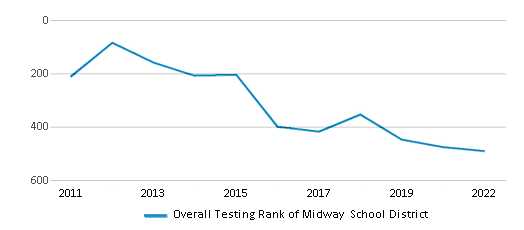
Math Test Scores (% Proficient)
6-9%
25%
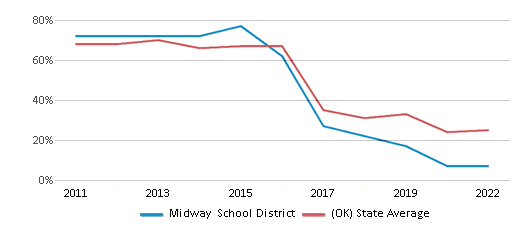
Reading/Language Arts Test Scores (% Proficient)
10-14%
27%
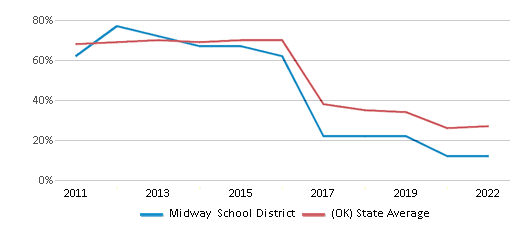
Science Test Scores (% Proficient)
20-29%
31%

Graduation Rate
(20-21)60-79%
78%
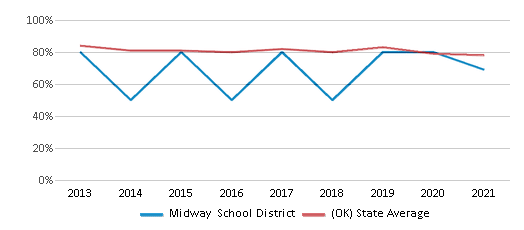
Students by Ethnicity:
Diversity Score
0.66
0.73
# American Indian Students
72 Students
27,037 Students
% American Indian Students
33%
13%
# Asian Students
n/a
3,463 Students
% Asian Students
n/a
2%
# Hispanic Students
4 Students
38,007 Students
% Hispanic Students
2%
19%
# Black Students
10 Students
15,143 Students
% Black Students
5%
7%
# White Students
103 Students
92,862 Students
% White Students
47%
45%
# Hawaiian Students
4 Students
806 Students
% Hawaiian Students
2%
n/a
# Two or more races Students
24 Students
27,840 Students
% of Two or more races Students
11%
14%
Students by Grade:
# Students in PK Grade:
15
6,503
# Students in K Grade:
20
7,350
# Students in 1st Grade:
10
7,518
# Students in 2nd Grade:
17
7,470
# Students in 3rd Grade:
9
7,467
# Students in 4th Grade:
11
7,161
# Students in 5th Grade:
21
11,503
# Students in 6th Grade:
16
38,940
# Students in 7th Grade:
16
53,730
# Students in 8th Grade:
24
55,226
# Students in 9th Grade:
15
2,128
# Students in 10th Grade:
12
76
# Students in 11th Grade:
18
63
# Students in 12th Grade:
14
71
# Ungraded Students:
-
-
District Revenue and Spending
The revenue/student of $12,812 is higher than the state median of $10,983. The school district revenue/student has stayed relatively flat over four school years.
The school district's spending/student of $12,683 is higher than the state median of $10,957. The school district spending/student has stayed relatively flat over four school years.
Total Revenue
$3 MM
$7,919 MM
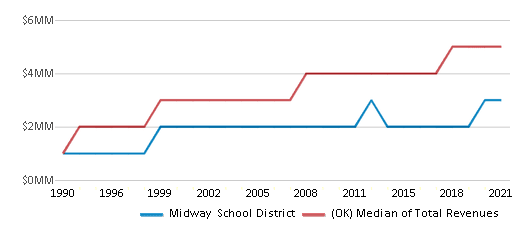
Spending
$3 MM
$7,900 MM
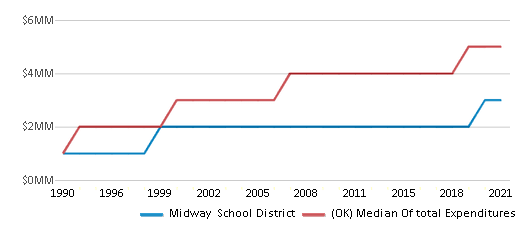
Revenue / Student
$12,812
$10,983

Spending / Student
$12,683
$10,957
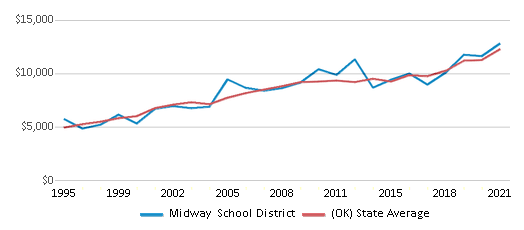
Best Midway School District Public Middle Schools (2025)
School
(Math and Reading Proficiency)
(Math and Reading Proficiency)
Location
Grades
Students
Rank: #11.
Midway Elementary School
(Math: 6-9% | Reading: 10-14%)
Rank:
Rank:
2/
Bottom 50%10
316 South Pine
Council Hill, OK 74428
(918) 474-3434
Council Hill, OK 74428
(918) 474-3434
Grades: PK-8
| 159 students
Recent Articles

Year-Round Or Traditional Schedule?
Which is more appropriate for your child? A year-round attendance schedule or traditional schedule? We look at the pros and cons.

Why You Should Encourage Your Child to Join a Sports Team
Participating in team sports has a great many benefits for children, there is no doubt. In this article you will learn what those benefits are.

White Students are Now the Minority in U.S. Public Schools
Increasing birth rates among immigrant families from Asia and Central and South America, combined with lower birth rates among white families, means that for the first time in history, public school students in the United States are majority-minority. This shift in demographics poses difficulties for schools as they work to accommodate children of varying language abilities and socio-economic backgrounds.





